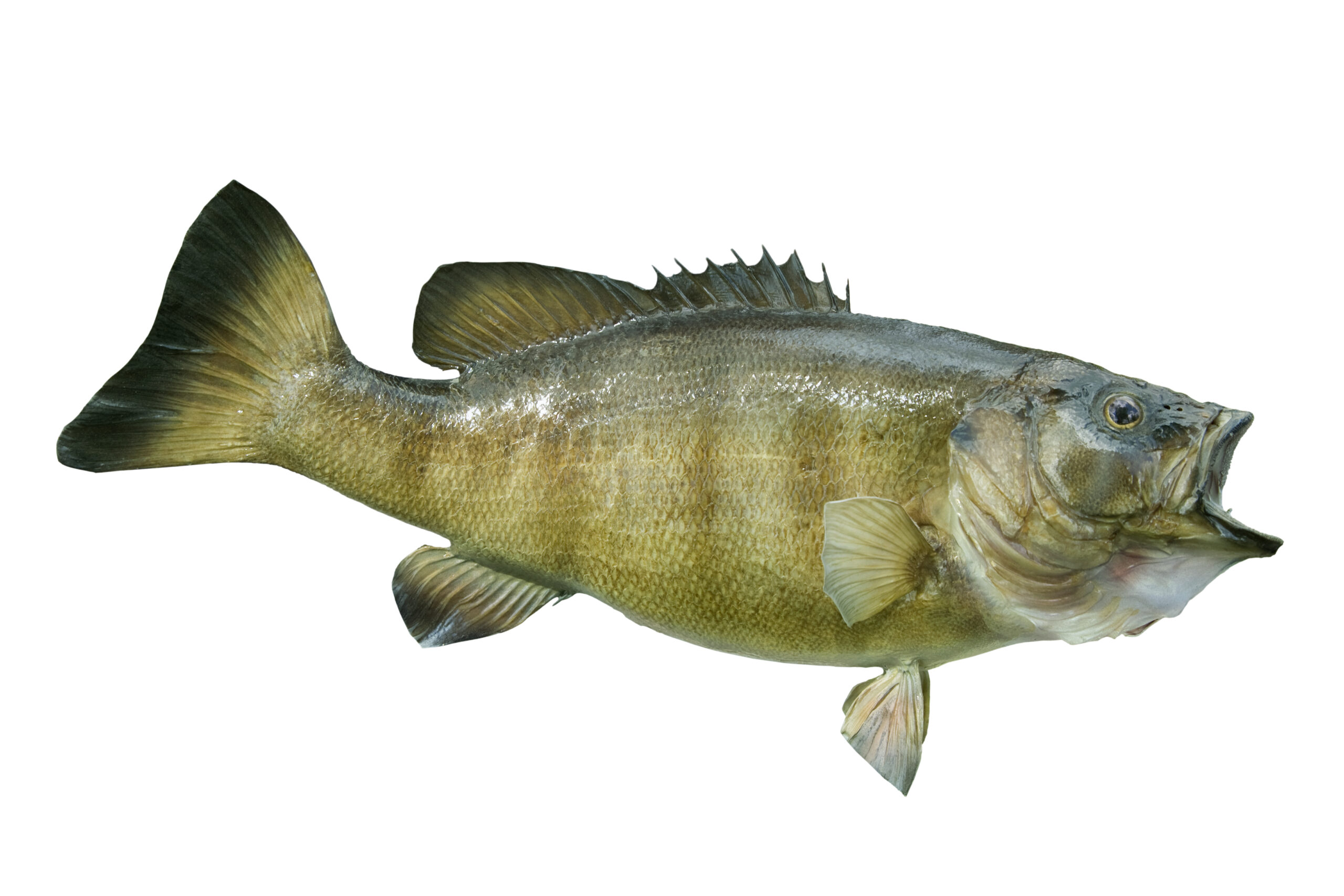Other common names:
Black bass
Scientific name :
Micropterus dolomieu
English common name:
Smallmouth bass

Identification
Body Shape: Robust body, much less laterally compressed than sunfish.
Average size: 20 to 38 cm (250 g to 1 kg).
Coloring: Variable according to the habitat: dark coloring with contrasting marks in clear, grassy water or in tinted water; paler coloring with more fuzzy marks in turbid water.
Golden brown to green back; paler and more golden sides with 8 to 15 dark vertical bars more or less fuzzy (more evident in the young); small golden spots on most of the flank scales; eyes usually red or orange; dark bars radiating from eye to tip of operculum; young caudal fin orange at the base, followed by a black band, then white at the tip.
Characteristic external features: Broad head; large eyes; relatively large mouth but upper jaw no longer than the eye; fine and numerous teeth; 2 connected dorsal fins giving the impression of a single one (front fin with 10 strong spines of relatively equal length and rear fin with soft rays); pelvic fins in a thoracic position almost under the pectoral fins and united by a membrane; 3 strong thorns on the anal fin; moderately forked caudal fin.
How to differentiate smallmouth bass from largemouth bass:
Smallmouth bass have:
smaller mouth and an upper jaw that does not protrude from the eye;
2 dorsal fins more conspicuously united;
lower front dorsal fin and more slightly rounded in shape (spines of uniform lengths);
dark and fuzzy vertical stripes on the sides;
pelvic fins united by a membrane;
young caudal fin orange at the base, followed by a black band, then white at the tip.
Largemouth bass have:
larger mouth and an upper jaw that protrudes beyond the eye;
2 dorsal fins almost entirely separate;
front dorsal fin higher and clearly rounded (spines of uneven lengths);
wide horizontal black band all along the body;
pelvic fins not united by a membrane but clearly united to the body by a membrane;
caudal fin of young, like that of adults, opaque green without brilliant colors.
Habitat
Fresh water (20 to 22oC), shallow and clear with a rocky or sandy bottom, with shelters (large stones and submerged logs). Lakes and rivers with medium current.
During the heat of summer, it is found in deep water.
Alimentation
The diet of adults is mainly composed of crayfish, also fish (perch, sunfish and bluefish) and insects, sometimes frogs, tadpoles, fish eggs and plant material. The young feed mainly on plankton, then on insects. Smallmouth bass feed on the surface, between two waters or near the bottom. In winter, it gathers near the bottom, is not very active and does not feed. Reproduction Season: Late spring to early summer, late May to early July (6 to 10 day period). Type of spawning ground: Water of variable depth (61 to 610 cm), with a sand, gravel or stone bottom and with shelters from rocks, logs or more rarely dense vegetation. Lakes and rivers. Mode: Sexual maturity is reached for the male around 3 to 5 years old and for the female around 4 to 6 years old. The male builds a nest 30 to 183 cm in diameter. It is generally faithful to a spawning site and returns to the same or nearby nest (<135 m) from year to year. The male and the female make an elaborate courtship. Depending on its size, the female lays between 5,000 to 14,000 amber to pale yellow eggs, 1.2 to 2.5 mm in diameter. The eggs attach themselves to the clean stones near the center of the nest. They hatch around 4 to 10 days. The male protects the eggs and the fry. The female can mate with more than one male, in more than one nest.

